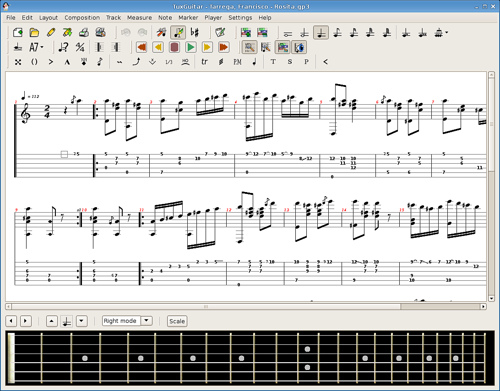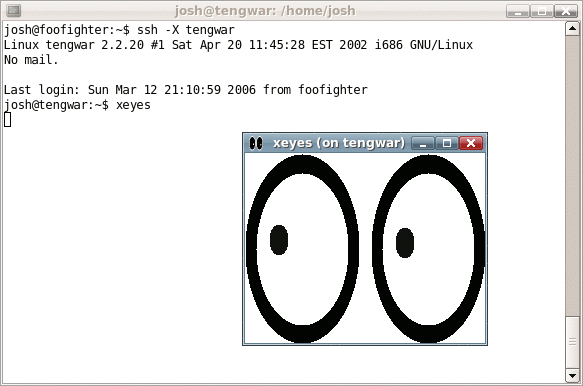|
Mass Assignment Vulnerability
Mass assignment is a computer vulnerability where an active record pattern in a web application is abused to modify data items that the user should not normally be allowed to access such as password, granted permissions, or administrator status. Many web application frameworks offer an active record and object-relational mapping features, where external data in serialization formats is automatically converted on input into internal objects and, in turn, into database record fields. If the framework's interface for that conversion is too permissive and the application designer doesn't mark specific fields as immutable, it is possible to overwrite fields that were never intended to be modified from outside (e.g. admin permissions flag). These vulnerabilities have been found in applications written in Ruby on Rails, ASP.NET MVC, and Java Play framework. In 2012 mass assignment on Ruby on Rails allowed bypassing of mapping restrictions and resulted in proof of concept injection of ... [...More Info...] [...Related Items...] OR: [Wikipedia] [Google] [Baidu] |
Vulnerability (computing)
Vulnerabilities are flaws in a computer system that weaken the overall security of the device/system. Vulnerabilities can be weaknesses in either the hardware itself, or the software that runs on the hardware. Vulnerabilities can be exploited by a threat actor, such as an attacker, to cross privilege boundaries (i.e. perform unauthorized actions) within a computer system. To exploit a vulnerability, an attacker must have at least one applicable tool or technique that can connect to a system weakness. In this frame, vulnerabilities are also known as the attack surface. Vulnerability management is a cyclical practice that varies in theory but contains common processes which include: discover all assets, prioritize assets, assess or perform a complete vulnerability scan, report on results, remediate vulnerabilities, verify remediation - repeat. This practice generally refers to software vulnerabilities in computing systems. Agile vulnerability management refers preventing attacks by ... [...More Info...] [...Related Items...] OR: [Wikipedia] [Google] [Baidu] |
Active Record Pattern
In software engineering, the active record pattern is an architectural pattern. It is found in software that stores in-memory object data in relational databases. It was named by Martin Fowler in his 2003 book ''Patterns of Enterprise Application Architecture''. The interface of an object conforming to this pattern would include functions such as Insert, Update, and Delete, plus properties that correspond more or less directly to the columns in the underlying database table. The active record pattern is an approach to accessing data in a database. A database table or view is wrapped into a class. Thus, an object instance is tied to a single row in the table. After creation of an object, a new row is added to the table upon save. Any object loaded gets its information from the database. When an object is updated, the corresponding row in the table is also updated. The wrapper class implements accessor methods or properties for each column in the table or view. This pattern is com ... [...More Info...] [...Related Items...] OR: [Wikipedia] [Google] [Baidu] |
Web Application
A web application (or web app) is application software that is accessed using a web browser. Web applications are delivered on the World Wide Web to users with an active network connection. History In earlier computing models like client-server, the processing load for the application was shared between code on the server and code installed on each client locally. In other words, an application had its own pre-compiled client program which served as its user interface and had to be separately installed on each user's personal computer. An upgrade to the server-side code of the application would typically also require an upgrade to the client-side code installed on each user workstation, adding to the technical support, support cost and decreasing productivity. In addition, both the client and server components of the application were usually tightly bound to a particular computer architecture and operating system and porting them to others was often prohibitively expensive for ... [...More Info...] [...Related Items...] OR: [Wikipedia] [Google] [Baidu] |
Web Application Framework
A web framework (WF) or web application framework (WAF) is a software framework that is designed to support the development of web applications including web services, web resources, and web APIs. Web frameworks provide a standard way to build and deploy web applications on the World Wide Web. Web frameworks aim to automate the overhead associated with common activities performed in web development. For example, many web frameworks provide libraries for database access, templating frameworks, and session management, and they often promote code reuse. Although they often target development of dynamic web sites, they are also applicable to static websites. History As the design of the World Wide Web was not inherently dynamic, early hypertext consisted of hand-coded HTML text files that were published on web servers. Any modifications to published pages needed to be performed by the pages' author. In 1993, the Common Gateway Interface (CGI) standard was introduced for interfacin ... [...More Info...] [...Related Items...] OR: [Wikipedia] [Google] [Baidu] |
Serialization
In computing, serialization (or serialisation) is the process of translating a data structure or object state into a format that can be stored (e.g. files in secondary storage devices, data buffers in primary storage devices) or transmitted (e.g. data streams over computer networks) and reconstructed later (possibly in a different computer environment). When the resulting series of bits is reread according to the serialization format, it can be used to create a semantically identical clone of the original object. For many complex objects, such as those that make extensive use of references, this process is not straightforward. Serialization of object-oriented objects does not include any of their associated methods with which they were previously linked. This process of serializing an object is also called marshalling an object in some situations. The opposite operation, extracting a data structure from a series of bytes, is deserialization, (also called unserialization or un ... [...More Info...] [...Related Items...] OR: [Wikipedia] [Google] [Baidu] |
Object (computer Science)
In computer science, an object can be a variable, a data structure, a function, or a method. As regions of memory, they contain value and are referenced by identifiers. In the object-oriented programming paradigm, ''object'' can be a combination of variables, functions, and data structures; in particular in class-based variations of the paradigm it refers to a particular instance of a class. In the relational model of database management, an object can be a table or column, or an association between data and a database entity (such as relating a person's age to a specific person). Object-based languages An important distinction in programming languages is the difference between an object-oriented language and an object-based language. A language is usually considered object-based if it includes the basic capabilities for an object: identity, properties, and attributes. A language is considered object-oriented if it is object-based and also has the capability of polymorphism, ... [...More Info...] [...Related Items...] OR: [Wikipedia] [Google] [Baidu] |
Ruby On Rails
Ruby on Rails (simplified as Rails) is a server-side web application framework written in Ruby under the MIT License. Rails is a model–view–controller (MVC) framework, providing default structures for a database, a web service, and web pages. It encourages and facilitates the use of web standards such as JSON or XML for data transfer and HTML, CSS and JavaScript for user interfacing. In addition to MVC, Rails emphasizes the use of other well-known software engineering patterns and paradigms, including convention over configuration (CoC), don't repeat yourself (DRY), and the active record pattern. Ruby on Rails' emergence in 2005 greatly influenced web app development, through innovative features such as seamless database table creations, migrations, and scaffolding of views to enable rapid application development. Ruby on Rails' influence on other web frameworks remains apparent today, with many frameworks in other languages borrowing its ideas, including Django in Pyt ... [...More Info...] [...Related Items...] OR: [Wikipedia] [Google] [Baidu] |
Java (software Platform)
Java is a set of computer software and specifications developed by James Gosling at Sun Microsystems, which was later acquired by the Oracle Corporation, that provides a system for developing application software and deploying it in a cross-platform computing environment. Java is used in a wide variety of computing platforms from embedded devices and mobile phones to enterprise servers and supercomputers. Java applets, which are less common than standalone Java applications, were commonly run in secure, sandboxed environments to provide many features of native applications through being embedded in HTML pages. Writing in the Java programming language is the primary way to produce code that will be deployed as byte code in a Java virtual machine (JVM); byte code compilers are also available for other languages, including Ada, JavaScript, Python, and Ruby. In addition, several languages have been designed to run natively on the JVM, including Clojure, Groovy, and Scala. J ... [...More Info...] [...Related Items...] OR: [Wikipedia] [Google] [Baidu] |
Play Framework
Play Framework is an open-source software, open-source web application framework which follows the model–view–controller (MVC) architectural pattern (computer science), architectural pattern. It is written in Scala (programming language), Scala and usable from other programming languages that are compiled to JVM bytecode, e.g. Java (programming language), Java. It aims to optimize developer productivity by using convention over configuration, hot code reloading and display of errors in the browser. Support for the Scala (programming language), Scala programming language has been available since version 1.1 of the framework. In version 2.0, the framework core was rewritten in Scala. Build and deployment was migrated to SBT (software), SBT, and Web template, templates use Scala instead of Groovy (programming language), Apache Groovy. History Play was created by software developer Guillaume Bort, while working at Zengularity SA (formerly Zenexity). Although the early releases a ... [...More Info...] [...Related Items...] OR: [Wikipedia] [Google] [Baidu] |
Proof Of Concept
Proof of concept (POC or PoC), also known as proof of principle, is a realization of a certain method or idea in order to demonstrate its feasibility, or a demonstration in principle with the aim of verifying that some concept or theory has practical potential. A proof of concept is usually small and may or may not be complete. These collaborative trials aim to test feasibility of business concepts and proposals to solve business problems and accelerate business innovation goals. A proof of value (PoV) is sometimes used along proof of concept, and differs by focusing more on demonstrating the potential customers use case and value, and is usually less in-depth than a proof of concept. Usage history The term has been in use since 1967. In a 1969 hearing of the Committee on Science and Astronautics, Subcommittee on Advanced Research and Technology, ''proof of concept'' was defined as following: One definition of the term "proof of concept" was by Bruce Carsten in the context o ... [...More Info...] [...Related Items...] OR: [Wikipedia] [Google] [Baidu] |
Secure Shell
The Secure Shell Protocol (SSH) is a cryptographic network protocol for operating network services securely over an unsecured network. Its most notable applications are remote login and command-line execution. SSH applications are based on a client–server architecture, connecting an SSH client instance with an SSH server. SSH operates as a layered protocol suite comprising three principal hierarchical components: the ''transport layer'' provides server authentication, confidentiality, and integrity; the ''user authentication protocol'' validates the user to the server; and the ''connection protocol'' multiplexes the encrypted tunnel into multiple logical communication channels. SSH was designed on Unix-like operating systems, as a replacement for Telnet and for unsecured remote Unix shell protocols, such as the Berkeley Remote Shell (rsh) and the related rlogin and rexec protocols, which all use insecure, plaintext transmission of authentication tokens. SSH was first de ... [...More Info...] [...Related Items...] OR: [Wikipedia] [Google] [Baidu] |



